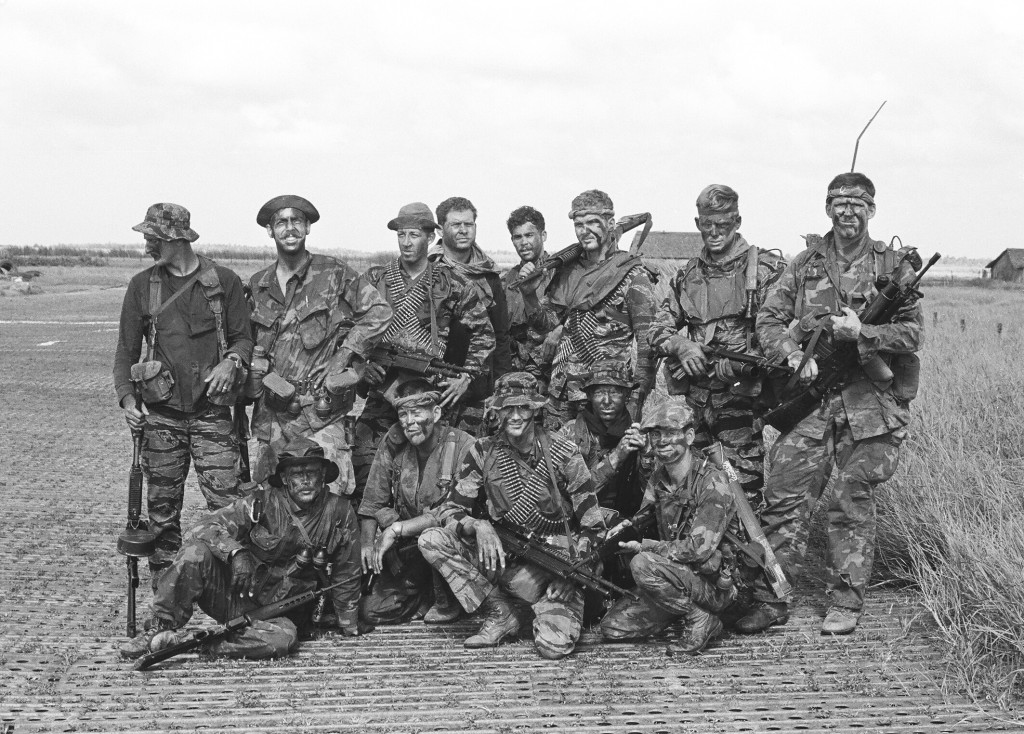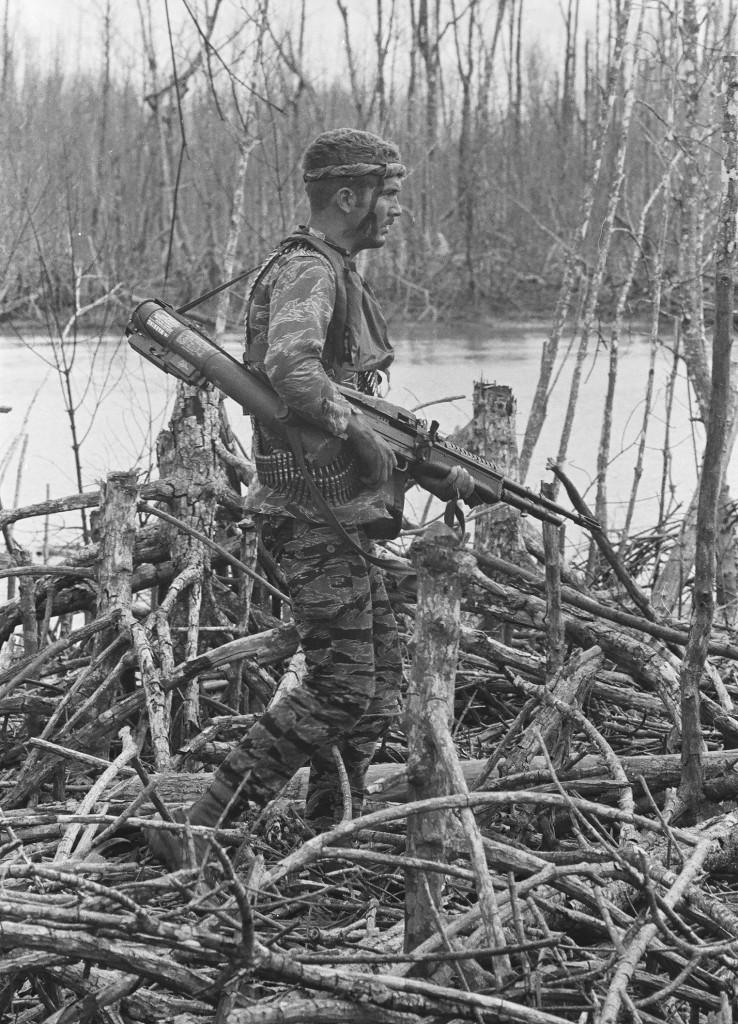Vietnam – The Men With Green Faces
Shortly after being established in January 1962, SEAL Team ONE deployed CPO Robert Sullivan and CPO Charles Raymond to take initial surveys and make preparations for training indigenous South Vietnamese in the tactics, techniques, and procedures of maritime commandos.

During this same period, the U.S. Government agreed to increase aid to South Vietnam in the fight against Viet Cong rebels. The agreement included paying for a larger Vietnamese army as well as for more U.S. advisors in the field. The Viet Cong (properly the Viet Nam Cong San or Vietnamese Communists), was the term applied to about 10,000 troops that had been left in hideouts in South Vietnam after the Geneva Conference of 1954 ended the French Indochina War (1946–1954). The Viet Cong, or VC, as they were commonly known, first tried subversive tactics to overthrow the South Vietnamese regime and later resorted to open warfare. They were subsequently reinforced by huge numbers of North Vietnamese troops infiltrating south.
Platoons from SEAL Team ONE and SEAL Team TWO were assigned to a specific operating area in Vietnam, and for the most part operated autonomously. Each SEAL platoon had a mobile support team (MST) boat element assigned. The MSTs were small groups of men specially trained to support SEAL operations. MSTs operated a variety of boats that included the light, medium, and heavy SEAL support craft (LSSC, MSSC, and HSSC, respectively).
By mid-1968 the SEAL Teams were fielding 12-man platoons, each comprising two squads of six men each, and most missions Vietnam were squad-sized operations. Generally four or five platoons at any given time were deployed to South Vietnam. SEAL platoons were never assigned permanently to Vietnam, but were sent on temporary duty assignments; generally for period of about six months time. Many of the men made several tours.
While the majority of SEAL operations were conducted after inserting from boats, it was in Vietnam that SEALs first began developing hit-and-run air-assault tactics using Army and Navy helicopters. Operations involved helicopters in “slick” or passenger configurations, but were also lightly armed with door guns.
SEAL platoons carried out day and night ambushes (but much preferred night operations), hit-and-run raids, reconnaissance patrols, and special intelligence collection operations. Calling them the “men with green faces” because of the face camouflage they used, the VC feared SEALs and often put bounties on their heads.

After about six years of heavy involvement in Vietnam, the relatively small group of SEALs accounted for 600 confirmed VC killed and 300 more almost certainly killed. Numerous others were captured or detained. No statistical tally can be placed on the effects of the intelligence gathered by SEALs, but there is no question that they made a contribution to the war out of all proportion to their numbers. In the psychological war, too, they were extraordinary; going some way towards evening up the unspoken balance of terror and gaining a reputation as fearsome and extraordinary warriors.
The last SEAL platoon departed Vietnam on 7 December 1971. The last SEAL advisors left Vietnam in March 1973. Between 1965 and 1972 there were 46 SEALs killed in Vietnam. They are forever remembered on the Navy SEAL Memorial at the Museum.
Note: Three U.S. Navy SEALs were recipients of the Medal of Honor during Vietnam. They were: Lieutenant Bob Kerrey, Lieutenant Tom Norris, and EM2 Mike Thornton. Mike Thornton was awarded the Medal of Honor for the rescue and exfiltration of Lieutenant Norris under withering fire on the night of 31 October 1972. There is no other recorded instance where two Medal of Honor recipients are known to have been involved in the same combat operation.

